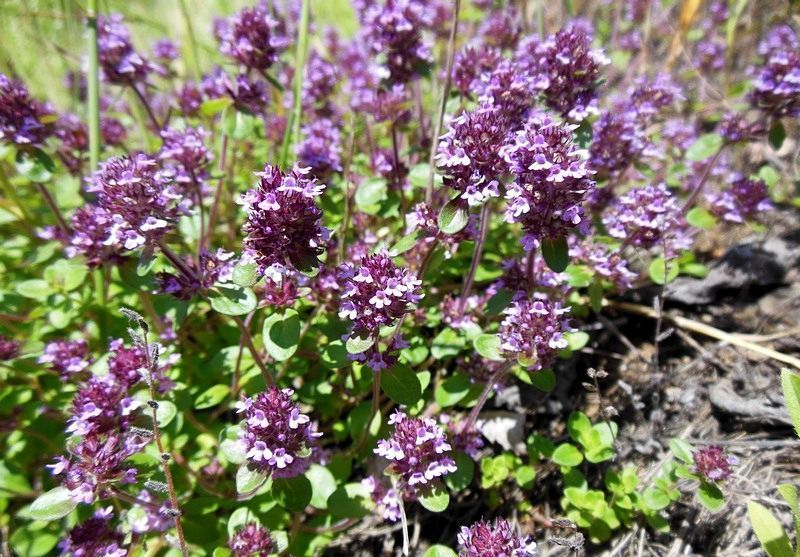
Lemon-smelling thyme from the family Lamiaceae grows in the middle and southern parts of the country. A small shrub blooms from June to August. The plant is frost-resistant and drought-resistant, loves sunny areas and does not require frequent watering. Lemon thyme is unpretentious in leaving, steadily transfers damages when trampling. Its healing qualities are used in folk and traditional medicine.
Content
Description
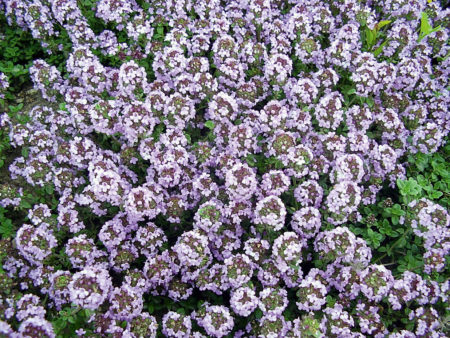
Perennial native of France grows up to 30 cm in length. Leaves are smooth in length up to 10 cm, in width 1-3 cm. Oval-shaped leaves are small, green in color, when rubbed give a lemon smell.
The flowers are bell-shaped, of lilac or pink color about 4 mm wide. Collected in inflorescences of ears, also smell like lemon. Small fruitful boxes contain 4 black seeds. In volume, one bush grows to 70 cm.
Varieties of lemon thyme

Over the past 30 years, many varieties and hybrids of fragrant plants have been bred. All of them are photophilous, can grow in partial shade, but do not like shadow. Without the sun, development slows down, few flowers appear. Thyme is a frost-resistant and drought-tolerant plant.
Main varieties
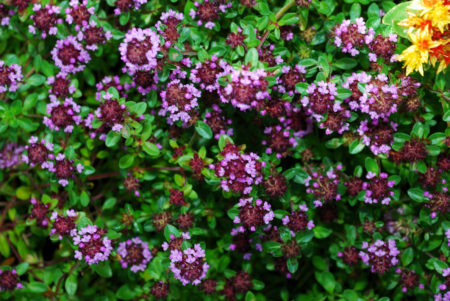
Decorative bushes do not lose their beauty during the entire vegetative period. The pleasant smell of lemon have leaves, stems and flowers.
Donna Varley
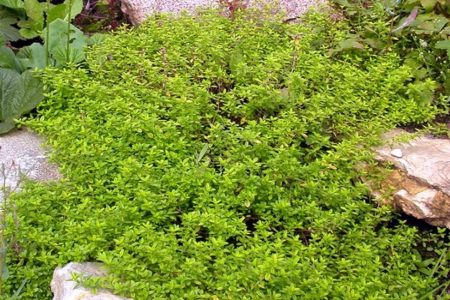
The bush grows to 10 cm. Foliage is green and yellow. Their length is about 1 cm. Small flowers are light purple, collected in inflorescences in the form of a brush. Lemon plant blooms from May to the end of summer. He loves bright places, in the shade the yellow leaves turn green.
Silver queen
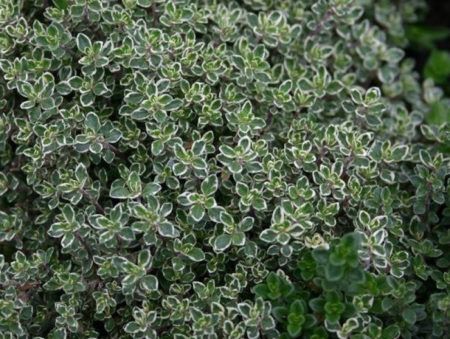
High shrub up to 20 cm tall and 30 cm wide. On an upright stalk are racemose inflorescences with pale pink flowers. Green-gray leaves with a white frame. Flowering - June, July. In mid-summer, the aroma is the most saturated.
Golden Dwarf
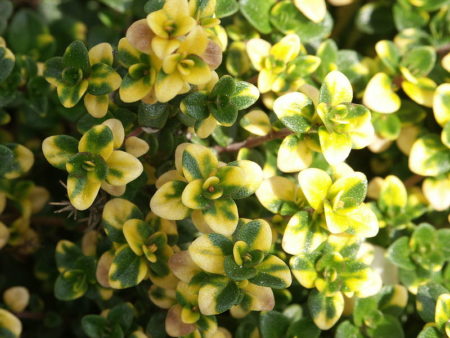
The variety gained popularity among gardeners thanks to light green foliage. Beautiful bushes grow no more than 10 cm in length. Bloom with purple-pink flowers in the second half of summer. Unpretentious to the soil, loves the sun.
Bertram Anderson
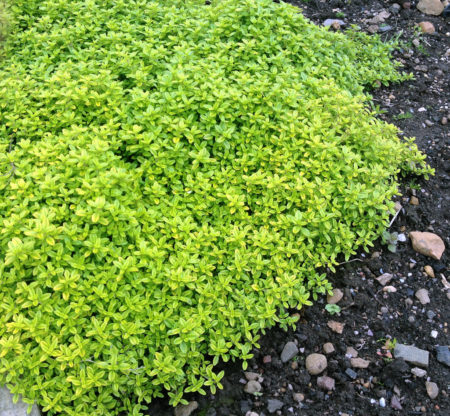
A plant 8-10 cm long forms a green-yellow rug. Leaflets with a yellow border 8 mm long. Light lilac flowers appear in July. Anderson is used more often to decorate rock gardens and rockeries.
Seed cultivation in open soil
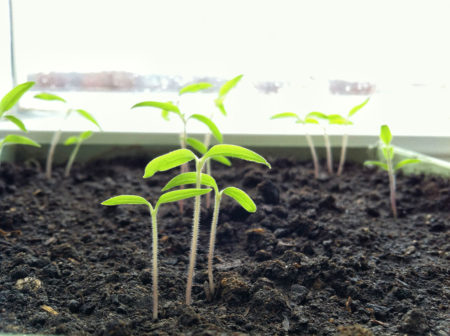
Planting and caring for thyme lemon exercise in the summer. Prefers thyme porous soil with low acidity. In autumn, you need to dig a plot, remove all weed grass and sprinkle with manure (5-6 kg of fertilizer per 1 square), phosphorus and potassium additives can be added. After wintering, the place needs to be re-dug up again, urea added (per 5 liters of water 100 g) and sown seeds in a couple of days.
Thyme seeds can be harvested on your own. They are collected in August or September, when seed bolls are formed. The fruits are carefully picked, dried and stored until spring. Acquire seeds in stores. It is necessary to check the expiration dates on the label before buying.
For quick germination, the seeds are soaked in warm water for 14 hours. It is desirable to spill the earth mixture with a solution of manganese for disinfection.
Landing is performed in May, when the weather is warm, dry, the air temperature is at least 13 degrees. Furrows are made, seeds are sown in rows, the gap between rows is 30 cm. They are sprinkled with sand on top, watered, covered with a film until sprouts appear for 15 days. After seedlings, dense plantings must be thinned out.
Growing thyme at home
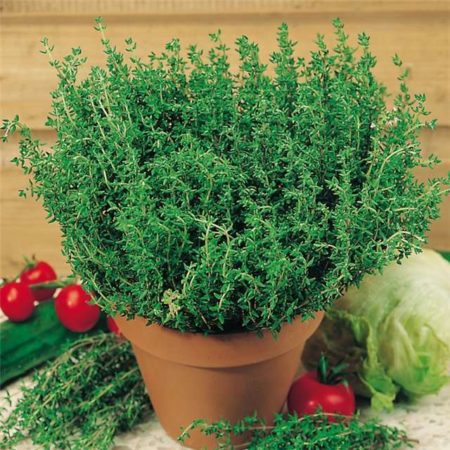
Grow a potted plant not difficult. Before planting thyme in a container, you need to choose a place for it. The window sill should be well lit, choose the south side of the house. In winter and cloudy days you will need additional illumination for plants.
To plant the seed, you need a low pot and nutritious soil. The tare height is about 15 cm. A drainage of 2 cm is laid at the bottom of the container. Earthen substrate: turf land, peat, sand in equal amounts. A mixture for cacti is suitable half mixed with chernozem. When drainage is laid and the soil is sown seeds on moist soil, sprinkled with sand or earth no more than 1 cm on top, watered. You can cover with a film to accelerate the appearance of sprouts. When they appear, put the pot in a shaded place. If there are too many seedlings, then they are planted in another container. When the seedlings grow and get stronger, they are returned to a sunny place.
Thyme Care
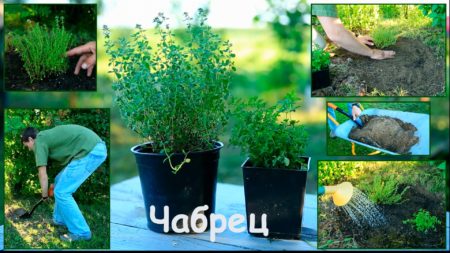
An unpretentious plant does not require special care. Simple procedures are performed as needed.
Watering
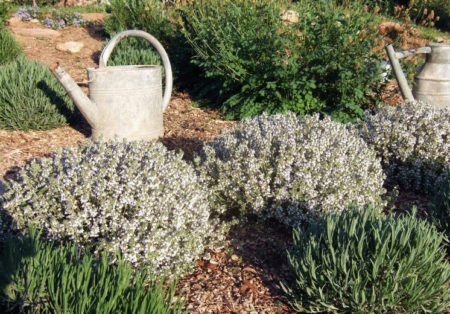
Thyme easily tolerates drought, but flowering depends on the abundance of moisture. In the rainy season, watering is stopped for several days until the land dries. In dry times, it is enough to water the bushes 1-2 times a week, especially during flowering.
Loosening
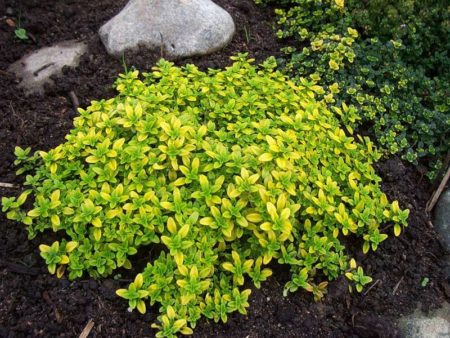
Thyme needs light soil. Around the bushes spend regularly loosening. Do this carefully, because the color carpet is very thick, it is likely to damage the roots of young animals. Do not forget to remove weeds and weed.
Top dressing
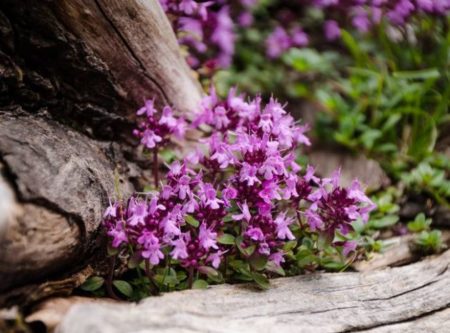
If in the autumn the soil was sufficiently fertilized, then lemon thyme does not need additional fertilizing. Once a year, you can make urea or complex fertilizers before planting bushes. There is enough nutrient soil for the development and growth of flowers.
Pruning
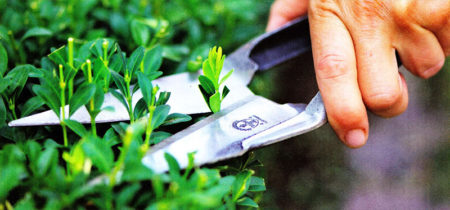
Cut bushes to give shape and volume. Pruning is done after flowering. Cut the shoots on 2/3 of the bush. Only the woody part of the plant remains. Pruning can be done before flowering, in the spring. It turns out in the summer a dense colored carpet.
Home Care
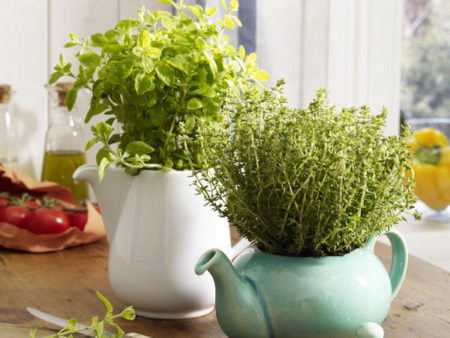
The south side of the house is ideal for the development of thyme. Only a few conditions are necessary for the bushes to develop successfully:
- room temperature 13-15 degrees;
- good lighting;
- loosening the soil in the pot is not deep, the root system is superficial;
- watering as the earth dries, copious moisture can destroy young growth;
- complex mineral fertilizers are added twice a year.
At home, leaves and flowers for tea are cut off gradually so as not to damage the plant. Do this during the flowering period and after it. In the second year of life, bushes can be planted in other containers.
Thyme propagation
Thyme is propagated by seeds, division of the bush and cuttings. The seed propagation method is given above. You can sow seeds for seedlings in March. Grow them in a container, then after strengthening the seedlings, after a couple of months, transplant into the garden.
Cuttings
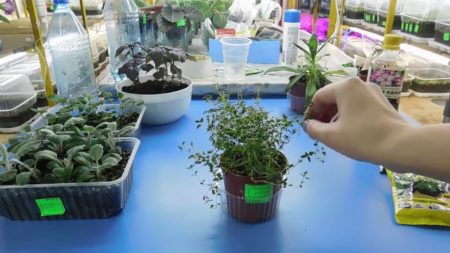
When pruning occurs, the cuttings are not thrown away, but transplanted into the greenhouse for strengthening or immediately planted in a new area. Cut a green petiole about 5 cm, put it in water until the roots appear, or you can immediately plant it in the ground under a jar. The soil is slightly moistened to root the cuttings. They are taken after 15-20 days. Propagation by cuttings is carried out throughout the growing season.
Bush division
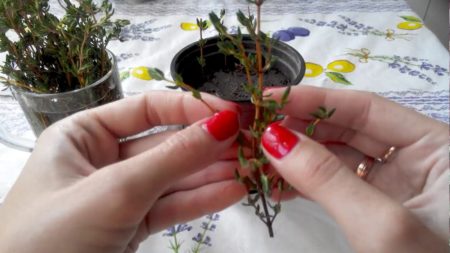
The bush is dug up after flowering. Carefully separate the roots, freeing them from the ground. Small plants are planted in pots or immediately in the garden to a new place in the warm time of the day. Wells are made, the seedlings are lowered, covered with soil, slightly compacted, watered. Rooting occurs after a couple of weeks.
Landscaping Lemon Thyme

Lemon thyme covers the area with a dense colored carpet. Such a rug will serve as an alternative to grass cover. If you need juicy greens, the bushes are pruned and prevent them from blooming.
Lemon thyme is used on the Alpine hills, in rockeries. Yellow foliage combined with purple and pink flowers looks beautiful in mixboards, stone gardens, along paths and flower beds.
Cooking use
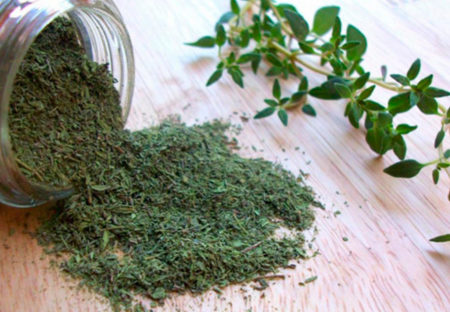
Thyme stalk is used as spices. Entrance is both fresh leaves and dry. From a tablespoon of a fresh plant, a small spoon of dry seasoning is obtained.
Thyme gives dishes a piquant taste, light bitterness and an unusual aroma. Seasonings are suitable for meat, vegetables, eggs, cheese. Bean dishes with the addition of thyme acquire a fresh and new taste. Grass is used to make sauces, marinades, and various gravy.
Thyme supplements extend the shelf life of foods. When preserving tomatoes and cucumbers, you can add spicy herbs. It is suitable for stews, soups, giving a tart and bitter taste to alcoholic beverages.
Medicinal properties
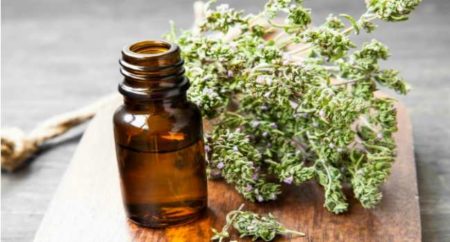
Thyme contains amino acids (valine, lysine, isoleucine, threonine, tryptophan), saturated fats, carbohydrates, sterols, proteins. Vitamin complex - A, D, E, K, the whole group B, H, PP. Minerals - calcium, potassium, magnesium, phosphorus, sodium, iron, selenium, manganese, zinc, copper. Such a rich composition allows the use of a medicinal plant for the treatment of various diseases.
Healing grass used in cosmetology, medicine, cooking. A strong antiseptic heals and disinfects wounds, inhibits pathogenic fungi and staphylococcus. It treats alcohol addiction, increases appetite.
Application in medicine:
- depression, neurasthenia, fatigue;
- asthma, tuberculosis, bronchitis, cough;
- helps with bloating, intestinal cramps;
- rheumatism, joint disease;
- bruises, bruises;
- uterine bleeding;
- acne, rash, eczema, abscesses, boils.
Thyme preparations relieve fatigue, help men regain their health (impotence, premature ejaculation, prostatitis).
Contraindications
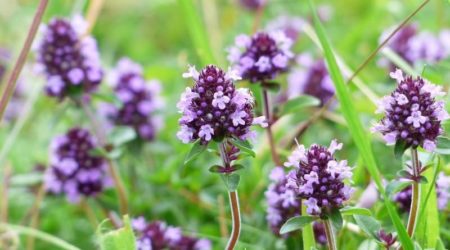
Before starting treatment with grass, you need to consult a doctor. Overdose is dangerous to health. Thymol is a part of thyme, because of this substance the herb has contraindications:
- gastric ulcer and gastritis;
- chronic kidney and liver diseases;
- hypertension;
- heart problems;
- individual intolerance to the drug.
The drug is contraindicated in children under 3 years old, pregnant women and while breastfeeding. At the slightest increase in pressure, thyme is harmful to health.
Pest and disease protection
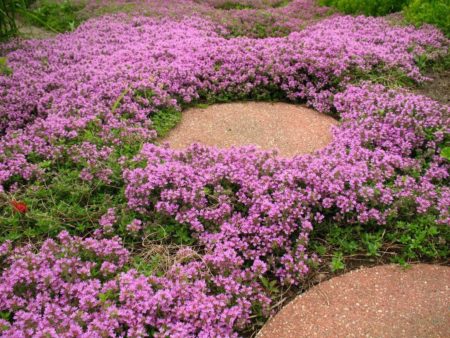
If you properly care for thyme, you can avoid many problems. Diseases are not terrible for the plant, but they can be provoked by intensive watering, the absence of weeding or uncleaned weed grass. The grass that grows in the shade is also susceptible to disease.
Disease
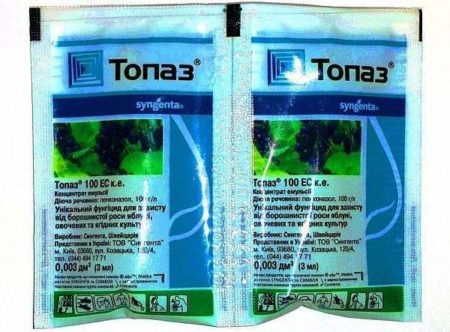
Fungal infections affect the bushes very rarely. The plant is resistant to fungi. For treatment, Fundazole, Topaz, Horus are used.. After chemical treatment, plants can not be used for treatment and cooking.
Harmful insects
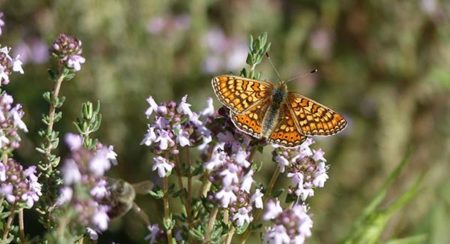
On the underside of the leaf you can see cobwebs and damaged leaves. These are the caterpillars of the meadow moth settled on the plant. Decis will help.
Pesticides fight sand lignite. Drugs are used strictly according to the instructions.
In flower buds, weevils lay larvae. A safer insect repellent Fitoverm.
Harvesting
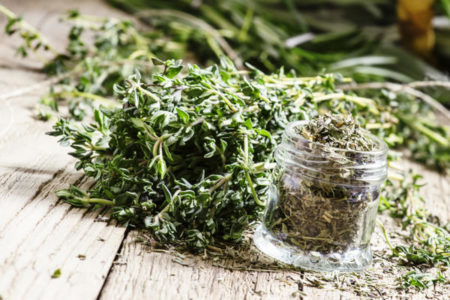
It is better to collect grass from the second year of life. Experienced gardeners after 6 years clean old thyme bushes, plow the ground, disinfect the soil and plant young animals.
The collection is carried out in dry weather so that there is no dew. Damaged, dry, diseased shoots do not pluck. If the collection is needed for the sake of essential oil, then the grass is cut once a year after the appearance of 50% of inflorescences in July. If plant parts are needed, then pick grass 2-3 times per season. The first harvest during the flowering period, the last in September. Between harvests, irrigation and fertilization are carried out to restore plants.
They leave 13-14 cm bushes from the ground. It is forbidden to cut plants under the root or to tear out with rhizome. Thyme is not advisable to be cleaned with machines, more often it is collected manually. Cut thyme with scissors, secateurs or a sickle. Put grass in baskets so that it does not compress. Thyme is not recommended to dry in the sun, it can lose useful qualities. Use special dryers to dry the grass.
Reviews
Tina, 32 years old
I drank tea with chamomile, mint, lemon balm. Brewed oregano, a pleasant weed. None of the herbs quenched thirst. Lemon thyme is what I was looking for a long time. Pleasant aroma and taste. I sleep peacefully, have good dreams, good mood and optimism have returned.
Ekaterina, 49 years old
I have been using thyme for the treatment of warts for a long time. On a glass of grass (fresh or dry) 2 liters of water. When it boils, turn it off after a couple of minutes. Leave on for 2-3 hours. Dip your hands in a hot infusion, soar for at least 50 minutes every day. A day later, prepare a new tincture. Warts go away after 10 days.
Milan, 28 years old
If you want an islet of summer at home, plant a lemon thyme in a pot. The unusual aroma brings joy when it is snowing outside. A couple of leaves can be added to tea instead of lemon. Or just enjoy the beautiful flowers and lemon scent. In spring, weed can be transplanted into the garden, and it will grow.
Tea and decoctions with thyme will give pleasure and benefit. Well, do not forget about the dosages of grass, everything should be in moderation. Proper care of the bushes will allow you to collect a good harvest and prepare high-quality raw materials for the winter.

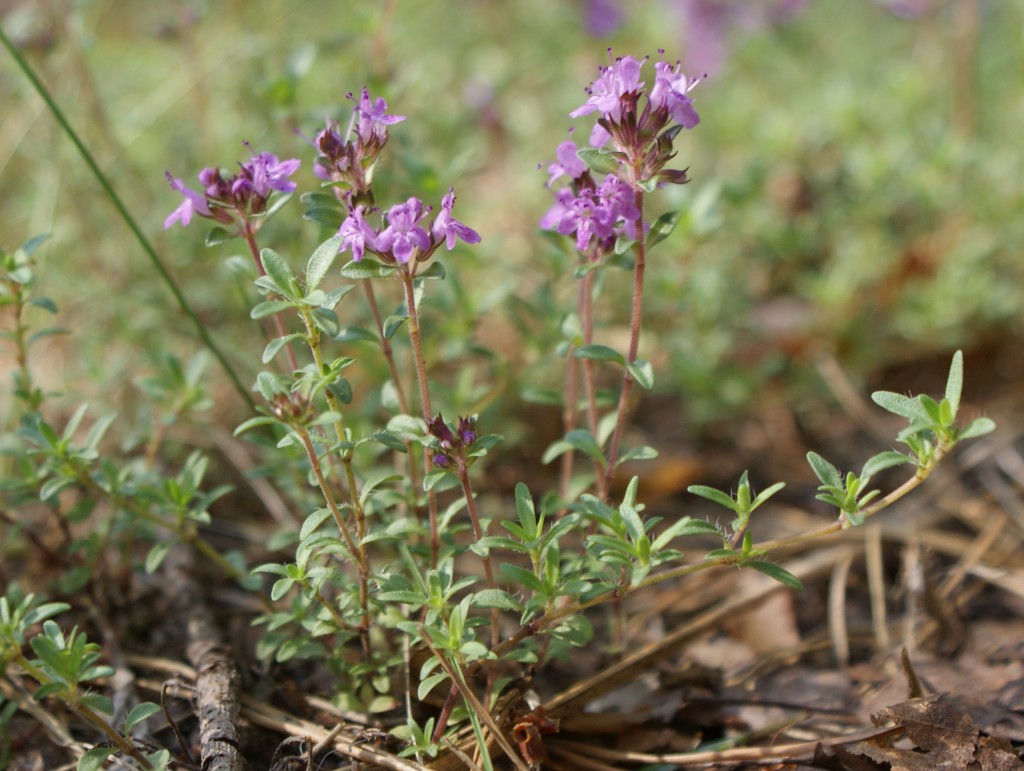 Creeping thyme: variety description, cultivation in open ground, planting and care
Creeping thyme: variety description, cultivation in open ground, planting and care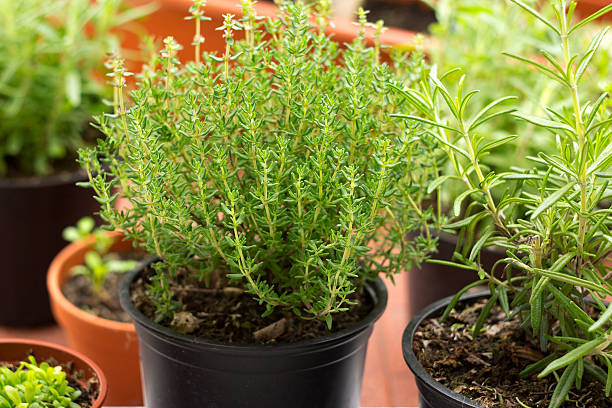 How to grow thyme from seeds at home on a windowsill in a pot
How to grow thyme from seeds at home on a windowsill in a pot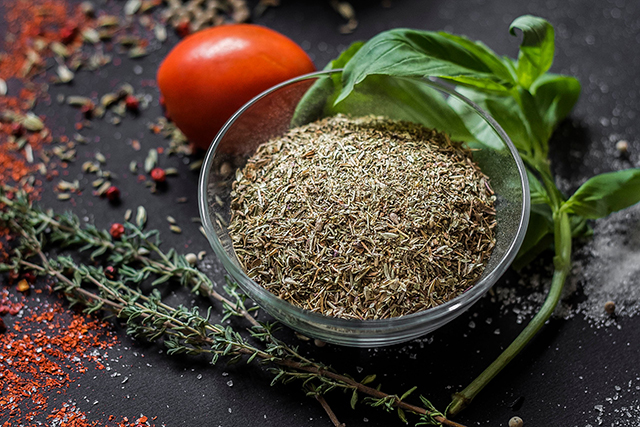 How to grow thyme from seeds in open ground with a photo
How to grow thyme from seeds in open ground with a photo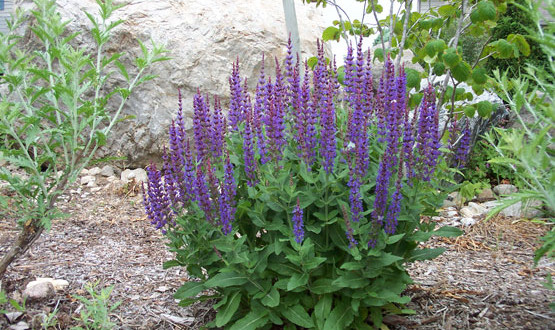 How to grow thyme in open ground near Moscow
How to grow thyme in open ground near Moscow